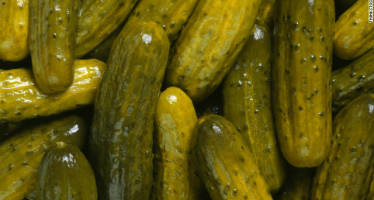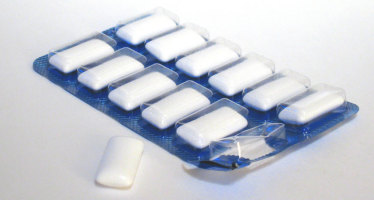The Dumpster: Hot Stuff

Mary Avery grew up on a prehistoric dome of salt in the middle of the Louisiana marsh. It was huge: six miles around and with caves 50,000 feet deep. It belonged to her parents, so naturally she wasted no time in escaping it.
In the early 1800s she was happily swept away by the handsome Edmund McIlhenny, a promising young banker who promised her a life of excitement in racy New Orleans. Soon things got exciting indeed when New Orleans was invaded by Union soldiers in the 1860s. Buildings were burned, businesses failed—as Donald Trump might say, it was a disaster, except this time that was the truth.
Like many others, Edmund and Mary ran home to Mom and Dad Avery and their hill of salt. It was now called Avery Island—her parents had exploited it into a very successful salt-mining business. The Avery salt mine became so successful that the Union army found out about it. Salt is a vital ingredient in preserving meat, and the Union army preserved a lot of meat. Soon the salt mine was confiscated for the war effort, and the McIlhennys were on the run again, this time to Texas. They had no love for Texas, but they were happy to be alive.
The war ended. Edmund and Mary returned to Louisiana to reclaim their family property only to find it—the mansion, the farms, the mines, everything—pillaged and destroyed. The only thing Union soldiers left alone was a tiny plot of brutally hot Capsicum peppers Edmund had once planted, from seeds given to him by a childhood friend. The peppers made for a fun prank on unsuspecting guests who were brought to tears by the spicy heat. The Union army was tough, but not that tough. Made mostly of Northerners, they liked their food bland and white, and left the peppers alone.
There were no jobs for Southern bankers. Edmund was growing broke. Hands on his hips, he surveyed the Avery mountain of salt and his puny patch of potent peppers.
He recalled a recipe he had toyed with prior to the war. He mixed his salt and peppers with vinegar, then aged the brutal blend in leftover whiskey barrels for a few weeks. He strained the results into reclaimed cologne bottles he found on the cheap. A creative guy with no money, McIlhenny designed and printed his own labels, naming his new brew after a river in the hottest part of Mexico, mostly because he just liked the sound of it: Tabasco.
In 1868 he sold 350 of his little bottles to adventurous, hardy Southerners who had a taste for heat. A year later he sold a few thousand at $1 each. Northerners had no use for it, but Edmund soon opened an office in London to manage the huge European demand. Today the McIlhenny Company cranks out 720,000 2-ounce bottles per day using peppers descended from that same original patch, into the same style cork-topped bottles, sporting the same label. Tabasco is included in soldiers’ rations and is one of only a few American companies certified as a supplier to the Queen of England.

Michael Campbell
Michael Campbell is a songwriter and humor essayist. His “Dumpster” column closes every issue of Food & Spirits magazine. He has authored two books, including Are You Going To Eat That? (2009), and Of Mice and Me (2017). He also has four albums of original songs. The latest, My Turn Now, was released in 2015. Learn more at michaelcampbellsongwriter.com.
Related Articles
On the Menu: Pickles
Homemade condiments give food at several restaurants an extra kick. Here are some restaurants that offer homemade pickles on their
The Dumpster: It’s a Wrap
I bought a 16MB Flash card for my camera. The card itself is about the size of a Cheez-It. It
Food Service Warrior: Why Serving Groups is Cool
If you’ve read this article at all for the last few years, you would notice that the writers were always,
No comments
Write a commentOnly registered users can comment.














